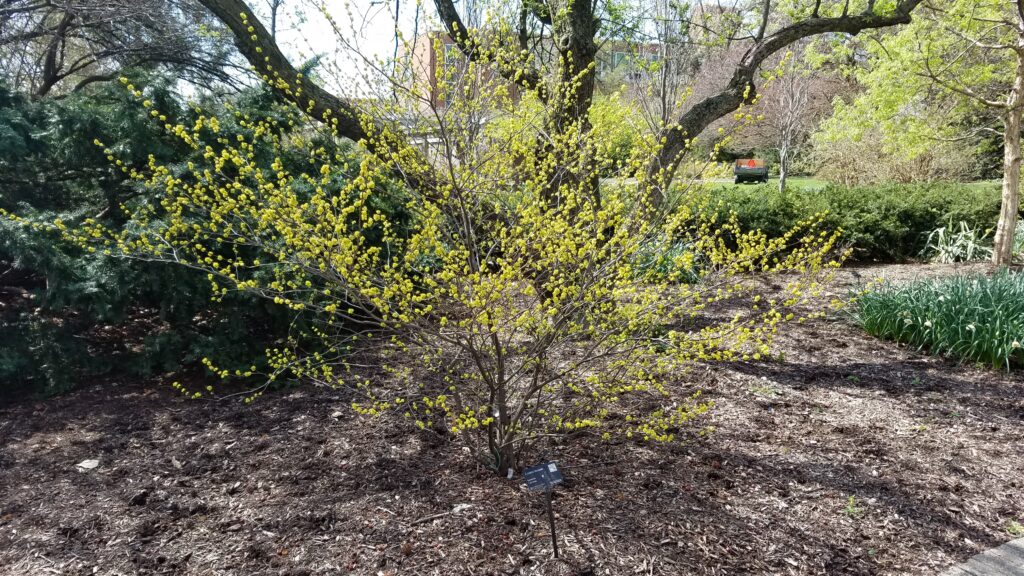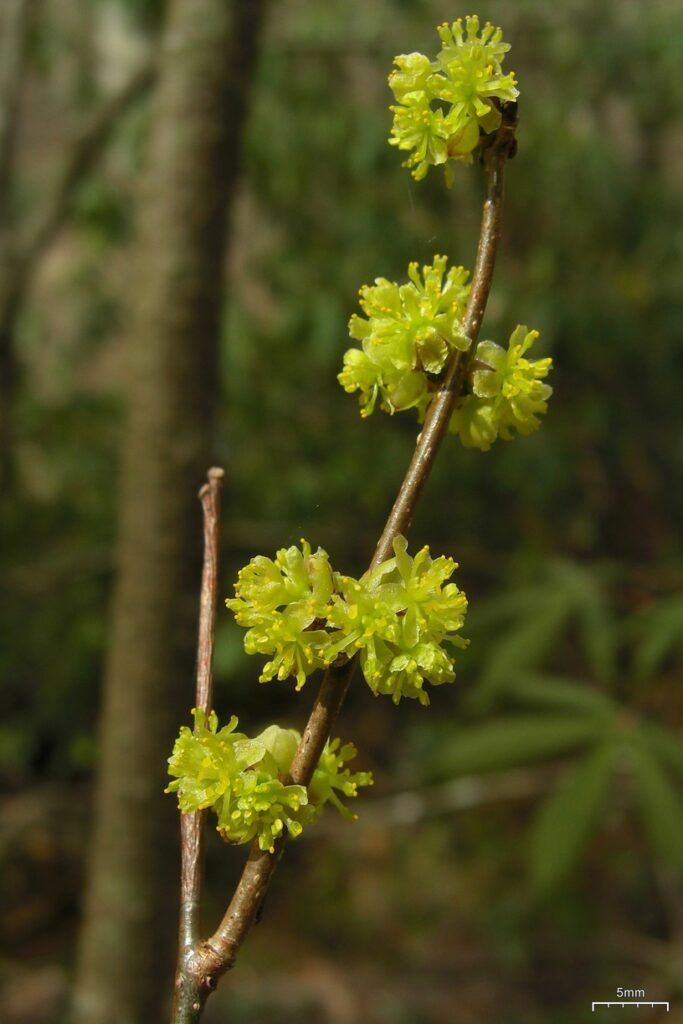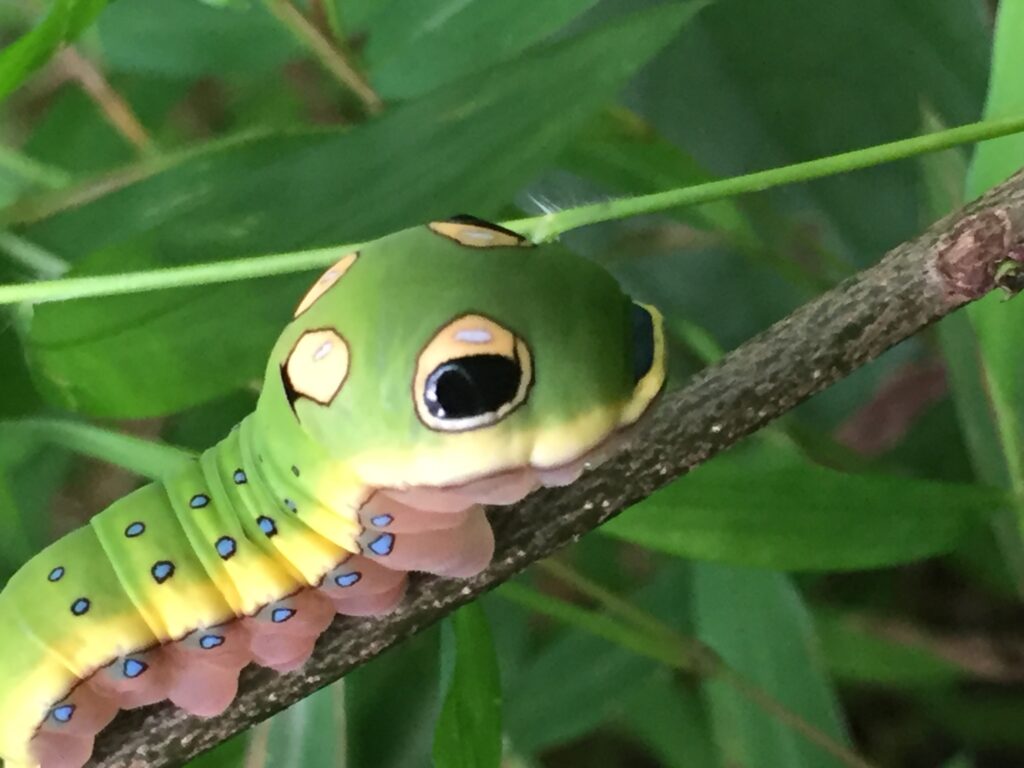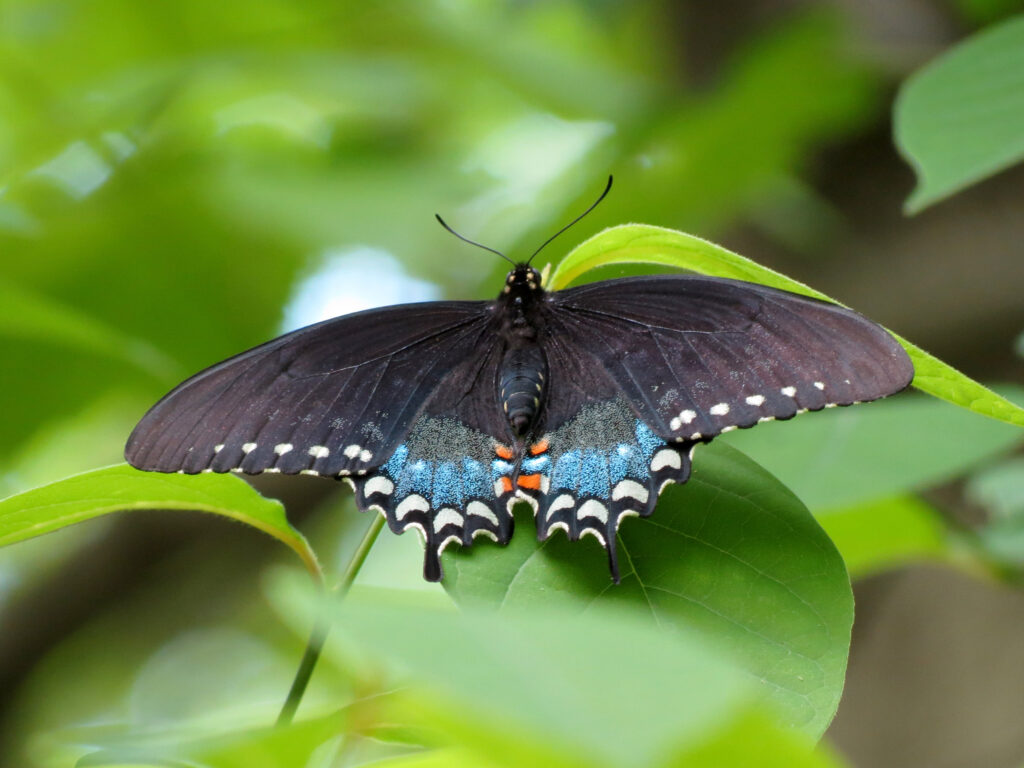Main Content
Written by Mary P., Rutgers Master Gardener of Somerset County

Lindera benzoin is not a fussy plant and is noted for its adaptability. It can grow in sun to full shade, acidic or slightly alkaline pH, clay, loam or sandy soil. It prefers moist loamy soil in partial shade. In all cases, moist, well drained soil is required. Its common name, spicebush, refers to the sweet, spicy fragrance of the stems, leaves and fruit when bruised.
Spicebush is a deciduous, multi-stemmed shrub that grows 6 – 12’ tall and wide with a rounded shape. It is native to the eastern United States. Its leaves are alternate, simple and oblong, tapering to a point and growing to 6” long and 2.5” wide with a smooth margin. The upper leaf surface is a darker green than its lower surface. In the fall the leaves turn bright yellow, the intensity dependent on the amount of exposure to the sun.

Dense clusters of yellow, aromatic flowers appear in March before the foliage appears. The flowers have six short, yellow sepals, no petals and are clustered close to the stem. The shrub is dioecious, male and female flowers are on different shrubs. The male flower produces pollen and has nine fertile stamens. The female flower has one fertile ovary and 12-18 rudimentary, infertile stamens. The male flower is larger and showier than the female but only the female flower produces a fleshy fruit. The drupe is initially green but matures to a bright red and becomes visible when the leaves fall. Each drupe contains one seed and tastes and smells like pepper. The drupes attract birds and other pollinators.
The spicebush is the host plant of the larvae (caterpillar) of the spicebush swallowtail butterfly, the eastern tiger swallowtail butterfly and the promethea silkmoth which feed on its leaves.


There are no serious pests or diseases. However, deer will browse the twigs and leaves.
This plant would be great in a pollinator garden, butterfly garden or a rain garden. Some native plant nurseries in New Jersey that may have this shrub are Toadshade Wildflower Farm, Rare Find Nursery and Steve Kristoph Nursery.
Sources-
https://plants.usda.gov/DocumentLibrary/plantguide/doc/pg_libeb.docx
https://www.missouribotanicalgarden.org/PlantFinder/PlantFinderDetails.aspx?kempercode=d890